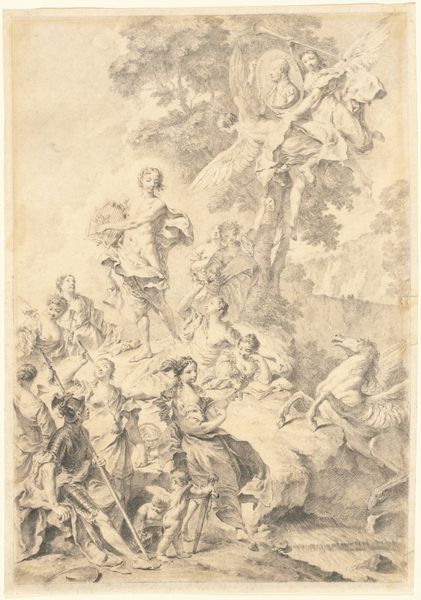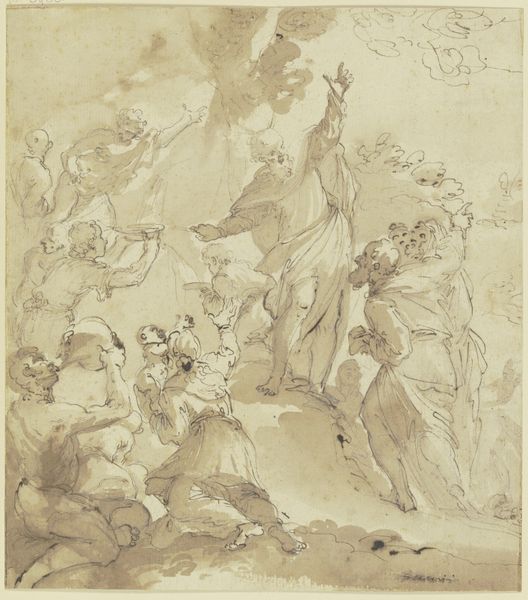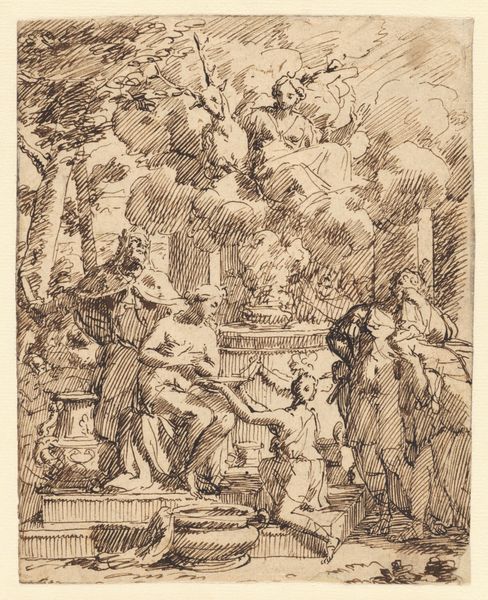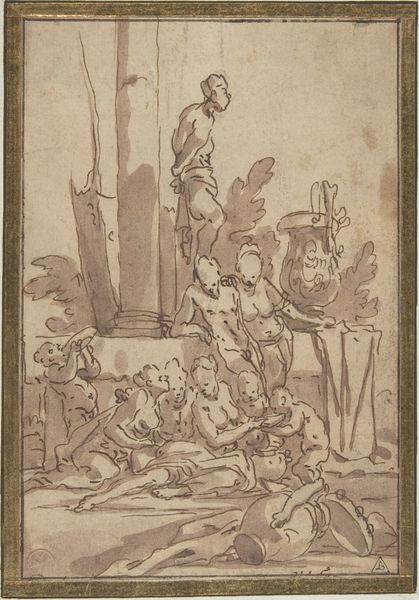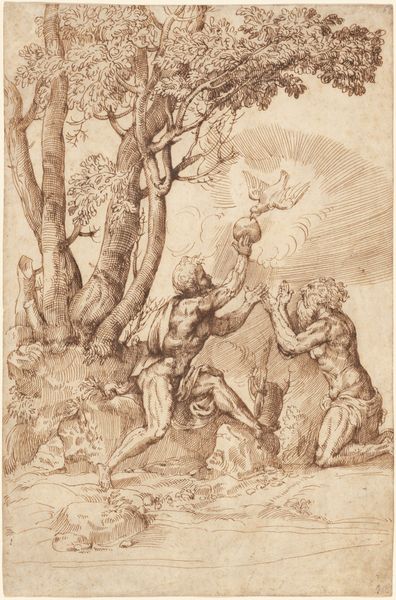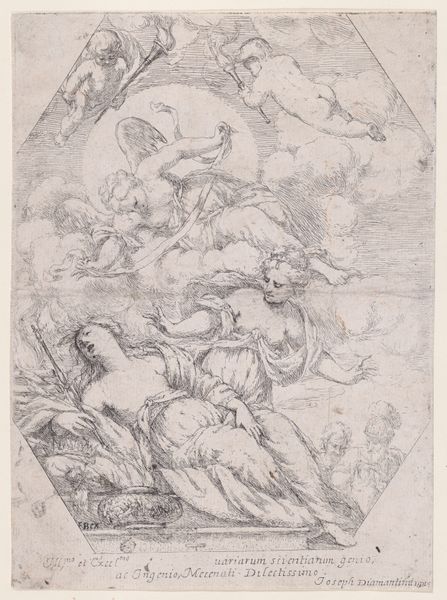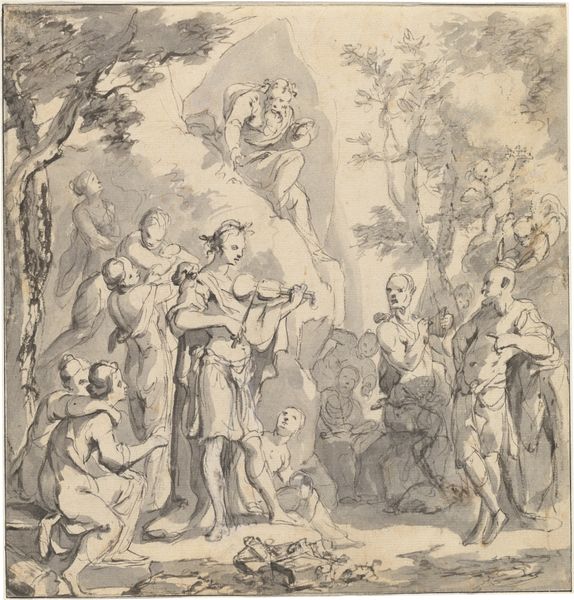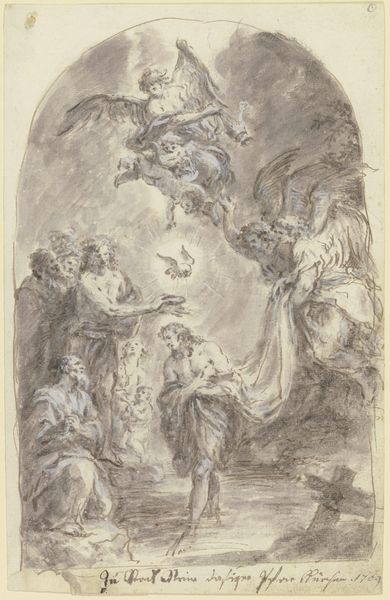
drawing, paper, ink
#
drawing
#
allegory
#
landscape
#
mannerism
#
figuration
#
paper
#
11_renaissance
#
ink
#
history-painting
Dimensions: sheet: 26.5 × 21.1 cm (10 7/16 × 8 5/16 in.)
Copyright: National Gallery of Art: CC0 1.0
Hans Rottenhammer created this pen and brown ink drawing, "The Adoration of the Golden Calf," sometime between the late 16th and early 17th centuries. The image depicts a scene from the Book of Exodus, where the Israelites, impatient with Moses' absence, melt their gold into an idol. Rottenhammer's image reflects the cultural anxieties of his time. In Counter-Reformation Europe, the Catholic Church sought to reinforce religious orthodoxy through art. Images like this, circulated as prints, served as moralizing tales, warning against the dangers of heresy and idolatry. The artist’s choice to depict the Israelites in a state of undress and frenzy further emphasizes their spiritual corruption. Note the figure of Moses at the top of the mountain, a reminder of the divine law that has been rejected in favor of earthly pleasures. To understand this drawing fully, we need to consult not only biblical texts, but also the visual culture of the period: the prints, pamphlets, and sermons that shaped religious belief and social behavior. This will help us to grasp the complex interplay between art, religion, and power in early modern Europe.
Comments
No comments
Be the first to comment and join the conversation on the ultimate creative platform.
